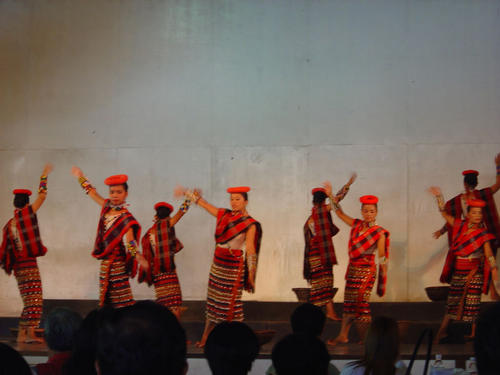
Banga Dance
Igorot maidens go to the river and prepare for a marriage ceremony.
|

They display not only their grace and agility, but also their stamina and strength as they go about their daily task of fetching water and balancing the banga, claypots full of water, on their heads.
|
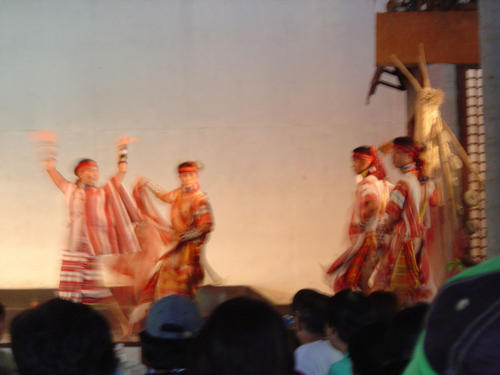
Apayao Courtship Dance. This dance comes from the northernmost section of the Mountain provinces. Here, the couple raise and wave their arms and hands like the wings of a bird in flight, and the ceremonial blanket worn by the woman is lightly wrapped around her. The man's movements resemble those of a fighting cock in the preening, strutting, and flying-off-the-ground gestures.
|
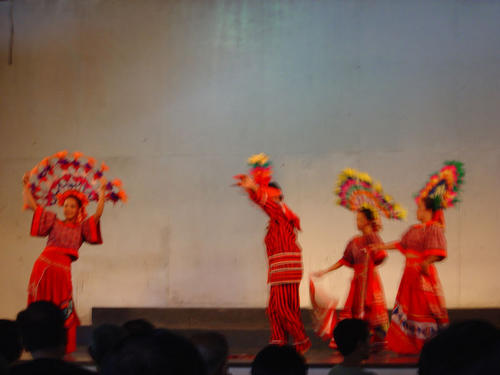
Dugsu Dance
A ceremonial dance from Bukidnon. Muslims render this dance to their gods in thanksgiving for a bountiful harvest.
|
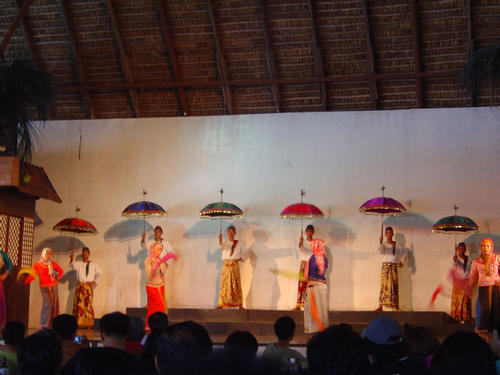
Singkil Dance
|
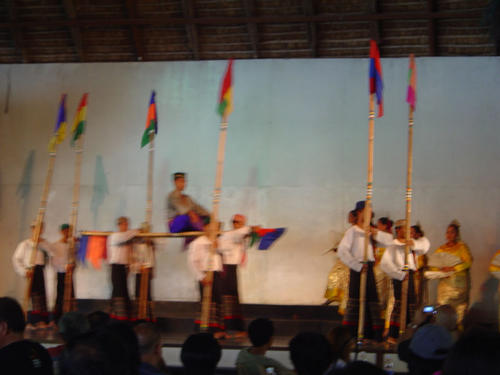
Tells the legend of the "Darangan" of the Maranao people of Mindanao. The legend tells of Princess Gandingan that is lost in a forest, along with her servant, during an earthquake caused by fairies of the forest. The legend ends with Princess Gandingan being saved by a prince
|
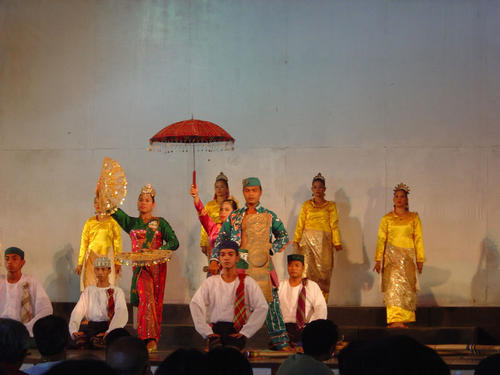
|
In this dance the falling trees in the forest are represented by crisscrossed bamboo sticks that the princess safely walks through. The princesses servant is represented by an umbrella girl and the fairies of the forest are represented by fan girls, whose fan represent wind.
|
|
|
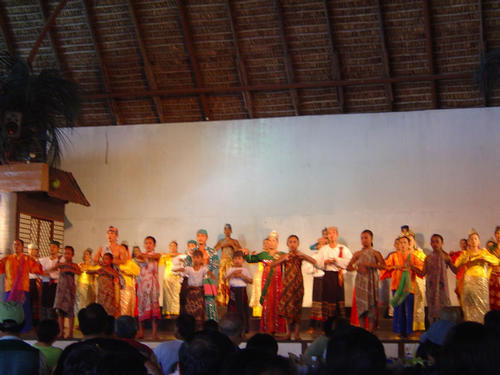
|
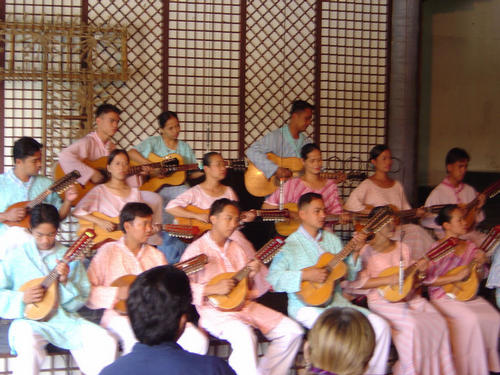 The Filipino rondalla has a wide repertoire ranging from the simple folk songs to the modern and contemporary tunes as well as Filipino and foreign classics.
The Filipino rondalla has a wide repertoire ranging from the simple folk songs to the modern and contemporary tunes as well as Filipino and foreign classics.
|
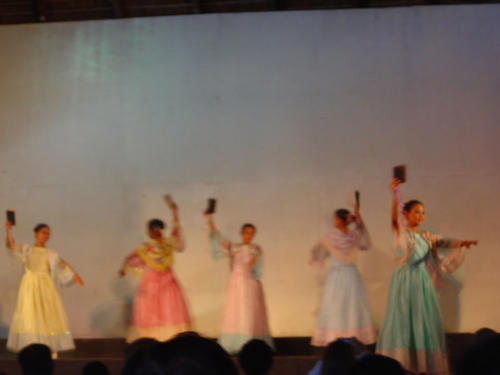 Dance of the Kolehiyala. Education is of Utmost Importance in Philippine society.
Dance of the Kolehiyala. Education is of Utmost Importance in Philippine society.
|
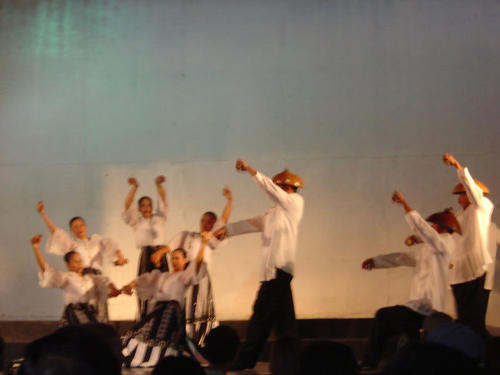
|

|
 "Pandanggo sa Ilaw Dance" or "Fandanggo with Lights" from Lubang Island, Mindoro, is a dance characterized by marking time with a clack of castanets, snapping of fingers, and stomping of feet in triple-time rhythm. A dancer of this grace dance has to balance three oil lamps, one on her head, and one on each hand.
"Pandanggo sa Ilaw Dance" or "Fandanggo with Lights" from Lubang Island, Mindoro, is a dance characterized by marking time with a clack of castanets, snapping of fingers, and stomping of feet in triple-time rhythm. A dancer of this grace dance has to balance three oil lamps, one on her head, and one on each hand.
|
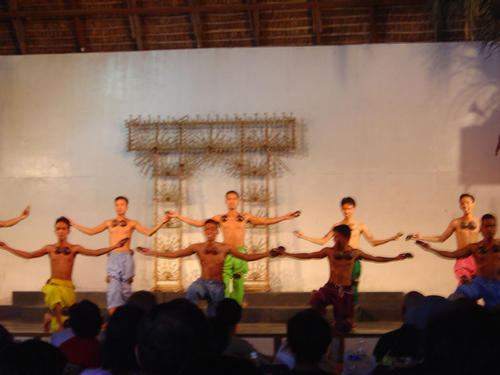 With coconut shells as implements the people of these two barrios danced the Maglalatik, or Magbabao, a war dance depicting a fight between the Moros and the Christians over the latik (residue left after the coconut milk has been boiled).
With coconut shells as implements the people of these two barrios danced the Maglalatik, or Magbabao, a war dance depicting a fight between the Moros and the Christians over the latik (residue left after the coconut milk has been boiled).
|
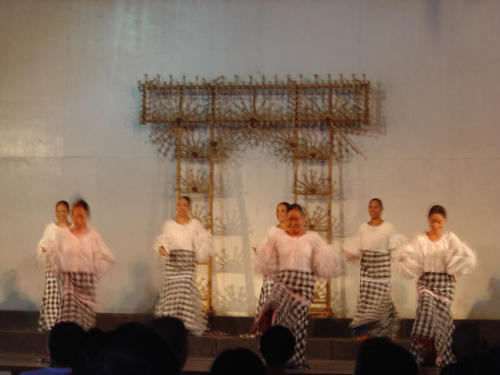
|
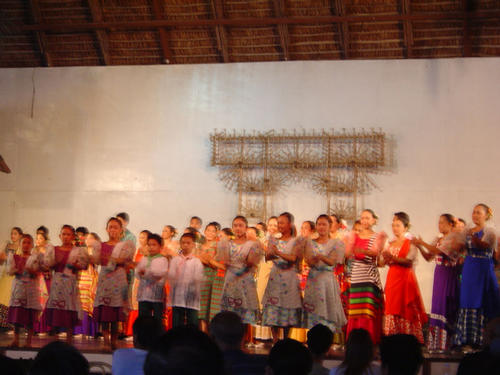
|
|

|
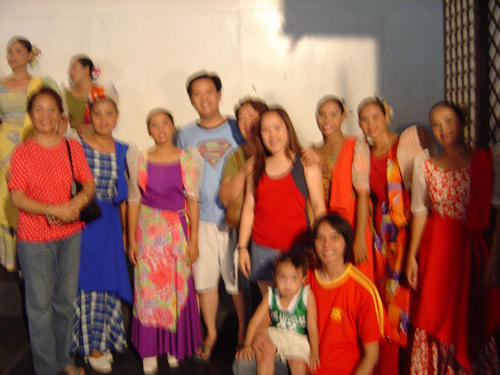
|
|
|
|
|
|
|
|
|
|
|
|
|
|
|